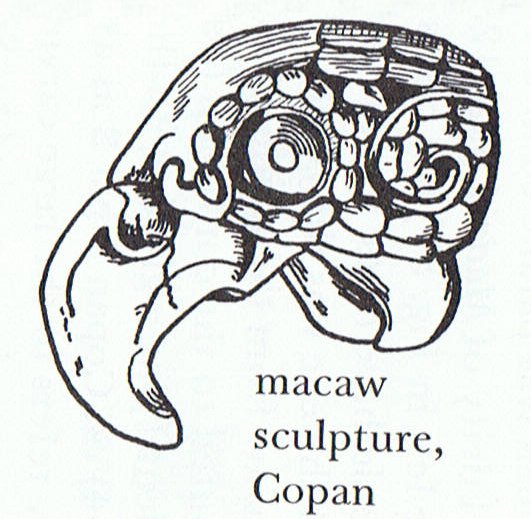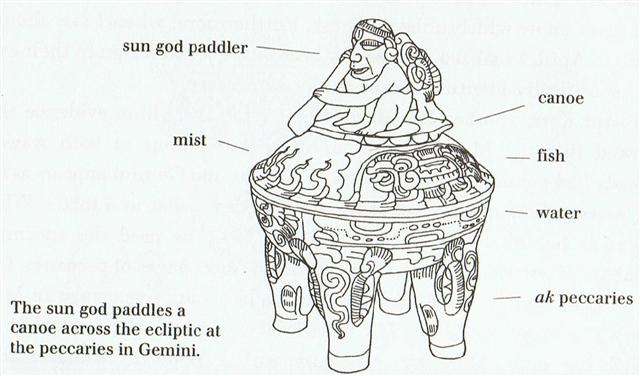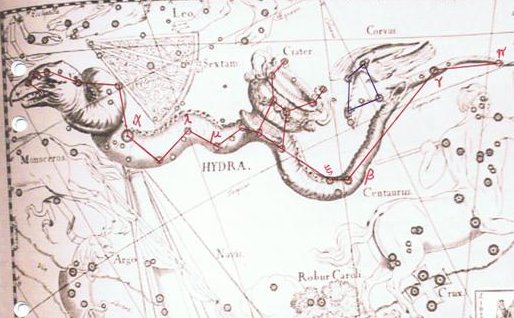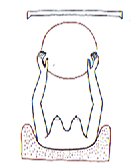409. Perhaps Itzam-Yeh corresponded to Janus, the god of January at the door between the old year and the new year - as described for the epoch when the Sun did not yet had defined where the new year would begin. ... in the time before the sky was lifted up to make room for the light, the vainglorious Seven-Macaw imagined himself to be the sun ... Should we see the Copan sculpture in a mirror - i.e. change the Mayan view of reading from right to left to be seen in our own convention of left to right - the resemblance will become more clear. Or better, we could change our own Janus picture to be in harmony with that of the Mayas, both now to be seen with darkness preceding light:
... In other words, the ancient Druidic religion based on the oak-cult will be swept away by Christianity and the door - the god Llyr - will languish forgotten in the Castle of Arianrhod, the Corona Borealis. This helps us to understand the relationship at Rome of Janus and the White Goddess Cardea who is ... the Goddess of Hinges who came to Rome from Alba Longa. She was the hinge on which the year swung - the ancient Latin, not the Etruscan year - and her importance as such is recorded in the Latin adjective cardinalis - as we say in English 'of cardinal importance - which was also applied to the four main winds; for winds were considered as under the sole direction of the Great Goddess until Classical times ...
From this idea follows that the other side of the Roman coin with Janus ought to have a picture somehow connected with the fundamental change from counting the year as 14 * 29½ = 413 nights to 365 (= 413 - 48) days:
At the top of the mast of the sunken 'ship' (calendar structure) was the speared Hydra (the Water Serpent), which figure possibly could correspond to Itzam-Yeh:
In the Babylonian zodiac there was a pair of cycles, one of them connected with the Milky Way river of time (and rebirth) and the other with constellation figures corresponding to those in our own solar zodiac:
Alphard (α Hydrae) was clearly defining a cardinal point, and this was the Pillar 'where debates were held' - presumably discussions whether to use the new Sun calendar or to keep to the old calendar of the Moon:
The Head of the Lion might have been considered as the proper place from where the new Sun calendar should be used. Comparing with Ursa Major we could get a similar idea because the head of Leo came after the head of the Great Bear (Itzam-Yeh):
It seems easy to imagine the Ursa Major constellation as having a head both towards the left and towards the right. |
||||||||||||||||||||||||||||||||||||||||||||||||||||||||||||||||||||||||||||||||||||||||||||||||||||||||||||||||||||||||||||||||||||||||||||||||||||||||||




.jpg)




.jpg)




